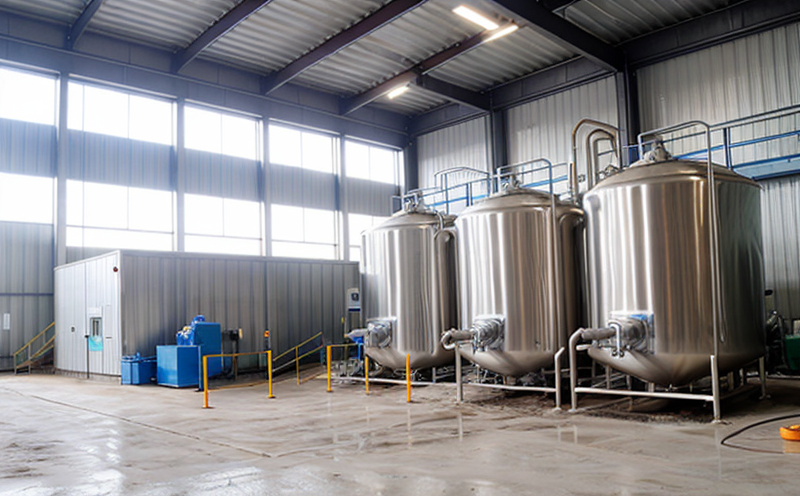ASTM D1886 Oil and Grease Test in Process Water
The ASTM D1886 oil and grease test is a critical procedure for assessing the quality of industrial process water. This test is essential because it helps identify the presence and concentration of fats, oils, and greases (FOG) that can impact the efficiency of wastewater treatment processes and overall plant operations.
FOGs are components such as cooking oil, shortening, lard, animal fats, vegetable shortenings, or other products that have been heated to a temperature sufficient for them to be poured into containers. When these substances cool, they can solidify, causing blockages in pipes and equipment. In industrial settings, FOGs can also interfere with the biological processes used in wastewater treatment.
The ASTM D1886 test is particularly important in sectors such as food processing, pharmaceutical manufacturing, and chemical production where significant quantities of water are utilized during various stages of production. By monitoring oil and grease levels in process water, quality managers can ensure that the water meets regulatory standards and does not pose a risk to downstream processes or the environment.
The test involves extracting FOG from the sample using an extraction solvent such as hexane or dichloromethane. The extracted material is then dried and weighed, providing a quantifiable measure of oil and grease content in the water. This quantitative data allows for informed decision-making regarding process optimization and compliance with industry standards.
The ASTM D1886 test method is widely recognized and used globally due to its reliability and repeatability. Compliance officers can rely on this test to ensure that their processes are meeting both internal quality control objectives and external regulatory requirements, such as those set by the Environmental Protection Agency (EPA) in the United States or similar bodies worldwide.
For R&D engineers, understanding oil and grease levels is crucial for optimizing process parameters. By continuously monitoring these levels, they can identify inefficiencies in the production process that could be contributing to higher-than-necessary FOG concentrations. This information can then be used to refine equipment design or adjust operational protocols to reduce FOG emissions.
Procurement teams benefit from this test by ensuring that suppliers provide water of appropriate quality for industrial use. By integrating ASTM D1886 testing into their supplier evaluation process, they can help maintain consistent product quality across the supply chain and ensure compliance with industry best practices.
Applied Standards
The ASTM D1886 oil and grease test is based on the American Society for Testing and Materials (ASTM) standard method, which specifies procedures for determining the amount of oil and grease present in water. This standard is widely recognized and used by industries worldwide to ensure consistent testing practices.
When conducting ASTM D1886 tests, it's important to follow all specified steps carefully to achieve accurate results. The test involves several stages including sampling, extraction using a solvent like hexane or dichloromethane, drying the extracted material, and finally weighing it to determine the oil and grease content.
The ASTM D1886 method ensures that laboratories can provide reliable data which is crucial for regulatory compliance. Regulatory bodies often reference this standard when setting limits on allowable FOG concentrations in industrial process water. By adhering to ASTM D1886, labs can ensure their results are consistent and comparable with other facilities.
Scope and Methodology
| Stage | Description |
|---|---|
| Sampling | The first step in the ASTM D1886 process is to collect a representative sample of the industrial process water. This involves taking multiple small samples from different points along the pipeline or vessel and combining them into one composite sample. |
| Extraction | The extracted material is then dried in an oven at 103°C ± 2°C until constant weight is achieved. This ensures that any moisture content has been removed, providing a more accurate measure of the oil and grease present. |
| Weighing | The final step involves accurately weighing the dried material to determine its mass. This mass directly corresponds to the amount of oil and grease in the original sample. |
Benefits
Elevates process efficiency by identifying potential blockages caused by FOGs in industrial pipelines and equipment.
Aids in compliance with environmental regulations, ensuring that the facility does not exceed allowable limits for oil and grease discharge into public sewers or waterways.





